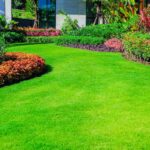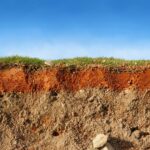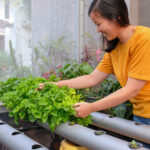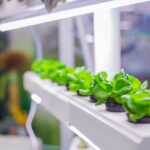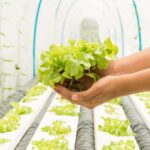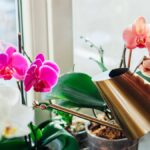Fertilizing your garden is crucial for healthy plant growth, but it doesn’t have to be expensive. With a bit of creativity and resourcefulness, you can enrich your soil without breaking the bank. Here are some effective and affordable ways to fertilize your garden.
Composting
Composting is one of the most cost-effective methods to fertilize your garden. It turns kitchen scraps and yard waste into nutrient-rich compost. Here’s how to start:
Collect kitchen scraps: Save fruit and vegetable peels, coffee grounds, eggshells, and other organic kitchen waste.
Yard waste: Add leaves, grass clippings, and small branches.
Build a compost pile or bin: Layer the organic materials, keeping it moist but not waterlogged. Turn the pile regularly to aerate it.
Wait: In a few months, you’ll have dark, crumbly compost to add to your garden soil.
Manure
Animal manure is another excellent and affordable fertilizer option. Here’s how to use it:
Source manure: Check with local farms or stables; they often have surplus manure they are willing to give away or sell cheaply.
Age it: Fresh manure can be too strong and may burn plants. Let it age or compost for several months before use.
Application: Mix it into the soil in the fall, allowing it to break down over the winter, or apply it lightly in the spring before planting.
Green Manure
Green manure involves growing certain plants specifically to improve soil fertility. Popular choices include clover, alfalfa, and buckwheat. Here’s how to use green manure:
Plant seeds: Sow green manure seeds in your garden after the growing season or in empty garden beds.
Let them grow: Allow the plants to grow until they reach maturity.
Incorporate: Cut them down and till them into the soil. This adds organic matter and nutrients back into the soil as they decompose.
Grass Clippings
Grass clippings are a readily available and free source of nutrients. Here’s how to use them effectively:
Collect clippings: After mowing your lawn, collect the grass clippings.
Use as mulch: Spread a thin layer around plants to act as mulch. It helps retain moisture and slowly releases nutrients as it decomposes.
Compost: Add grass clippings to your compost pile to boost its nutrient content.
Kitchen Waste Fertilizers
Certain kitchen scraps can be used directly as fertilizer. Here are a few methods:
Banana peels: Bury banana peels near your plants to provide potassium.
Eggshells: Crush eggshells and scatter them in your garden to add calcium.
Coffee grounds: Sprinkle used coffee grounds around plants to improve soil structure and add nitrogen.
Homemade Liquid Fertilizers
You can make your own liquid fertilizers from household items. Here are a few recipes:
Compost tea: Steep a bag of compost in water for a few days, then use the liquid to water your plants.
Weed tea: Soak weeds in a bucket of water for a week, then strain and dilute the liquid before using it as fertilizer.
Epsom salt solution: Dissolve a tablespoon of Epsom salt in a gallon of water and use it to water plants, especially for magnesium-loving plants like tomatoes and peppers.
Fish Emulsion
Fish emulsion is a high-nitrogen fertilizer made from fish waste. You can buy it commercially or make your own:
Homemade fish emulsion: Blend fish scraps with water, let it ferment for a few weeks, and then dilute before use.
Wood Ash
Wood ash from your fireplace or wood stove is a good source of potassium and lime. Here’s how to use it:
Collect ash: Make sure it’s completely cool and free from chemicals.
Application: Sprinkle lightly on garden beds and mix into the soil. Avoid using too much as it can raise soil pH levels.
Fertilizing your garden cheaply is possible with a bit of effort and creativity. By using compost, manure, green manure, grass clippings, kitchen waste, homemade liquid fertilizers, fish emulsion, and wood ash, you can provide your plants with the nutrients they need to thrive without spending a lot of money. Not only will these methods save you money, but they are also environmentally friendly, helping you maintain a healthy and sustainable garden.
Seaweed
Seaweed is a great source of micronutrients and can be used as a fertilizer. If you live near the coast, you can collect it for free. Here’s how to use it:
Rinse: Rinse the seaweed to remove salt and other contaminants.
Compost: Add it to your compost pile to boost its nutrient content.
Mulch: Lay seaweed directly on your garden as a mulch, or soak it in water to create a liquid fertilizer.
Worm Castings
Worm castings, or vermicompost, are an excellent fertilizer rich in nutrients and beneficial microbes. You can buy worm castings or start your own worm bin:
Worm bin: Create a worm bin using a container, bedding material (like shredded paper), kitchen scraps, and red worms.
Harvest castings: After a few months, harvest the worm castings from the bin.
Application: Mix the castings into your garden soil or use them to make a nutrient-rich worm tea.
Leaf Mold
Leaf mold is decomposed leaves that create a nutrient-rich, soil-like material. Here’s how to make and use it:
Collect leaves: Gather fallen leaves in the fall.
Pile or bag: Create a leaf pile or fill large garbage bags with leaves, adding a bit of moisture.
Wait: Let the leaves decompose for 6-12 months.
Application: Mix the resulting leaf mold into your garden soil to improve its structure and nutrient content.
Blood Meal
Blood meal is a high-nitrogen fertilizer made from dried animal blood. It can be a bit costly if purchased, but sometimes local slaughterhouses or butchers may offer it at a lower price:
Application: Sprinkle blood meal around your plants and work it into the soil.
Caution: Use it sparingly as it is very concentrated and can burn plants if over-applied.
Bone Meal
Bone meal, made from ground animal bones, is an excellent source of phosphorus and calcium. Like blood meal, it can be sourced from local butchers:
Application: Sprinkle bone meal in planting holes or around the base of plants.
Mix: Incorporate it into the soil to ensure even distribution of nutrients.
DIY Fertilizer Blends
Creating your own fertilizer blends from household items and inexpensive ingredients can be very effective. Here are a few simple recipes:
All-purpose fertilizer: Mix 4 parts seed meal, 1 part lime (for calcium), 1 part gypsum (for sulfur), and 1 part dolomite lime.
Nitrogen boost: Mix coffee grounds, grass clippings, and chopped up green leaves.
Phosphorus boost: Combine bone meal, rock phosphate, and fish bone meal.
Tips for Success
Soil Testing: Before applying any fertilizer, conduct a soil test to understand its nutrient composition and pH level. This helps you choose the right fertilizer and avoid over-application.
Balanced Fertilization: Ensure a balanced application of nitrogen, phosphorus, and potassium. Overuse of one nutrient can lead to deficiencies in others.
Timing: Apply fertilizers at the right time. For example, compost and manure are best added in the fall, while liquid fertilizers can be applied during the growing season.
Moderation: More is not always better. Over-fertilizing can harm plants and the environment. Follow recommended rates and observe how your plants respond.
Fertilizing your garden cheaply is not only possible but also beneficial for the environment. By using natural and homemade fertilizers like compost, manure, green manure, and various kitchen and yard waste, you can create a thriving, sustainable garden without spending a fortune. These methods help recycle organic waste, enrich your soil, and promote healthy plant growth, ensuring a bountiful harvest season after season.

